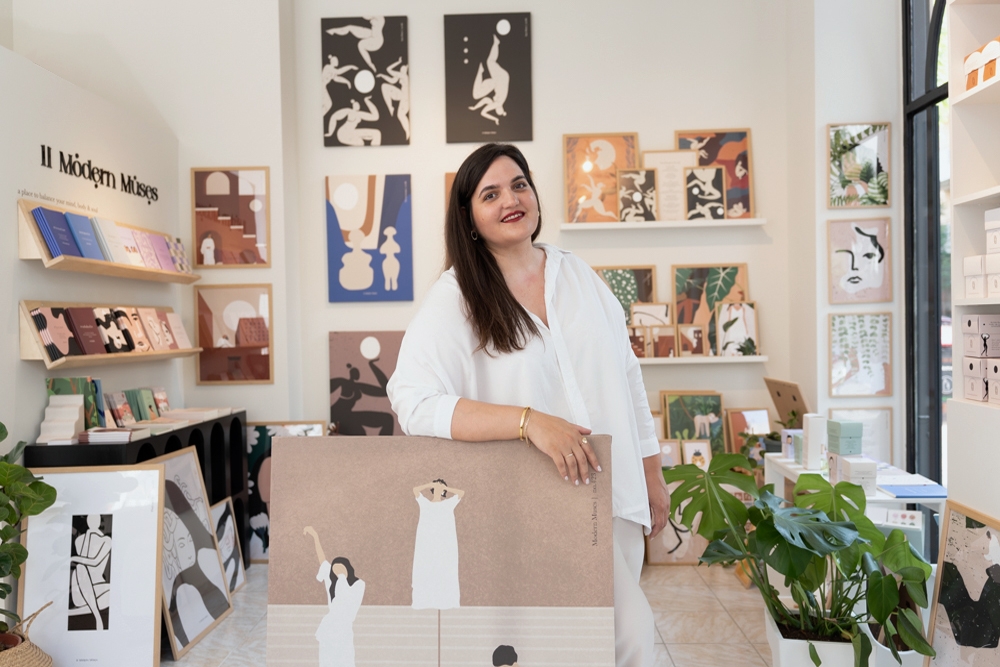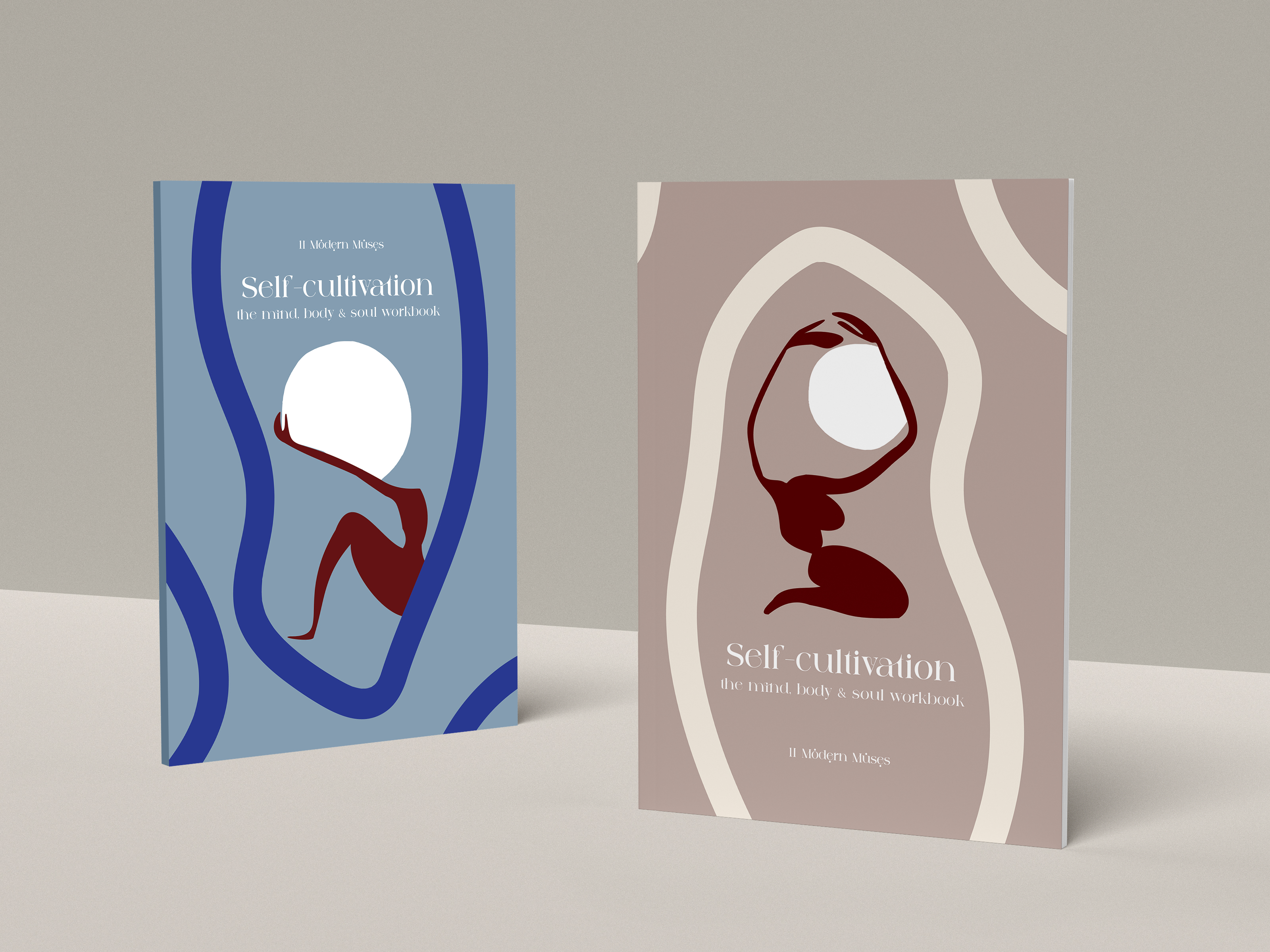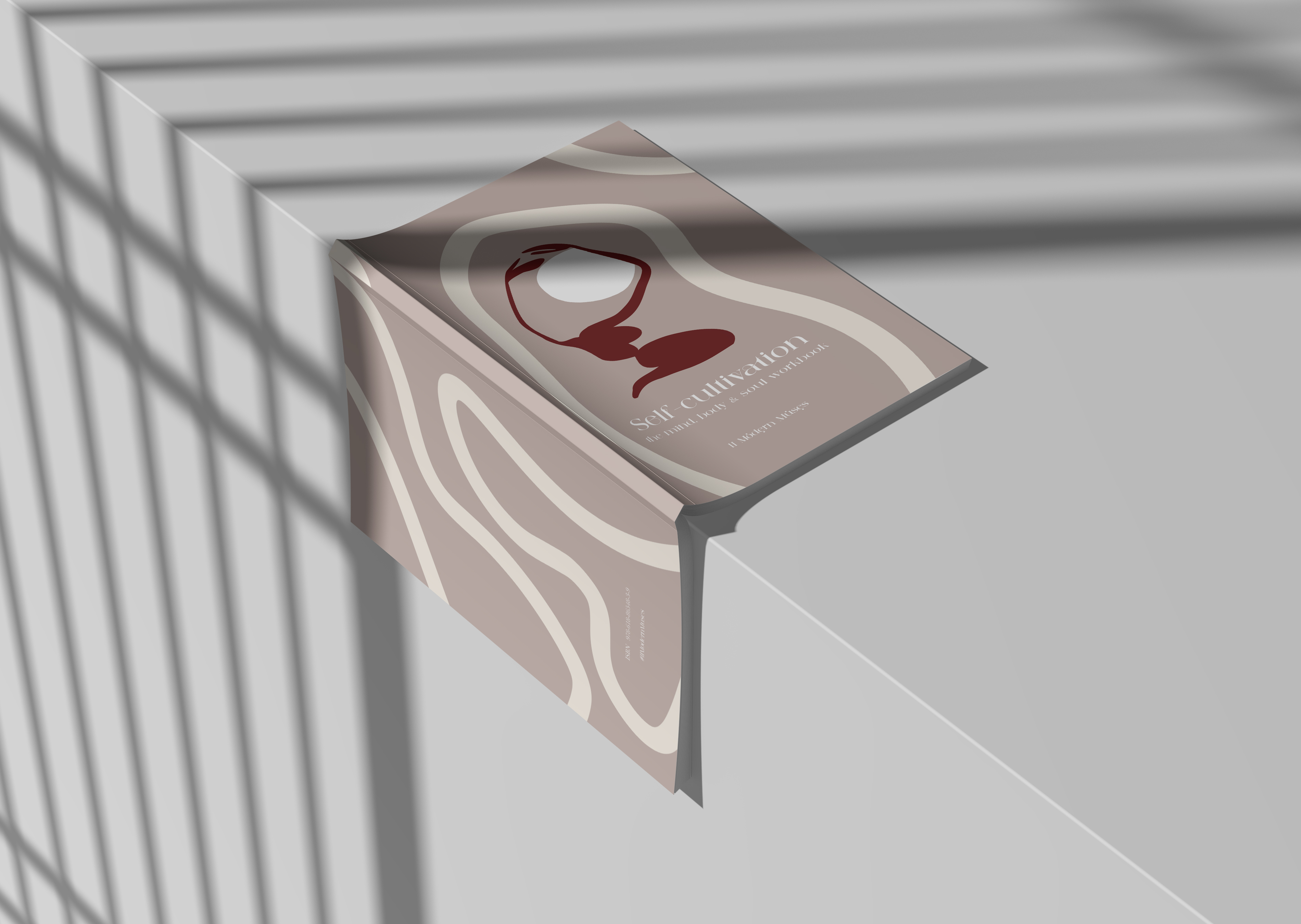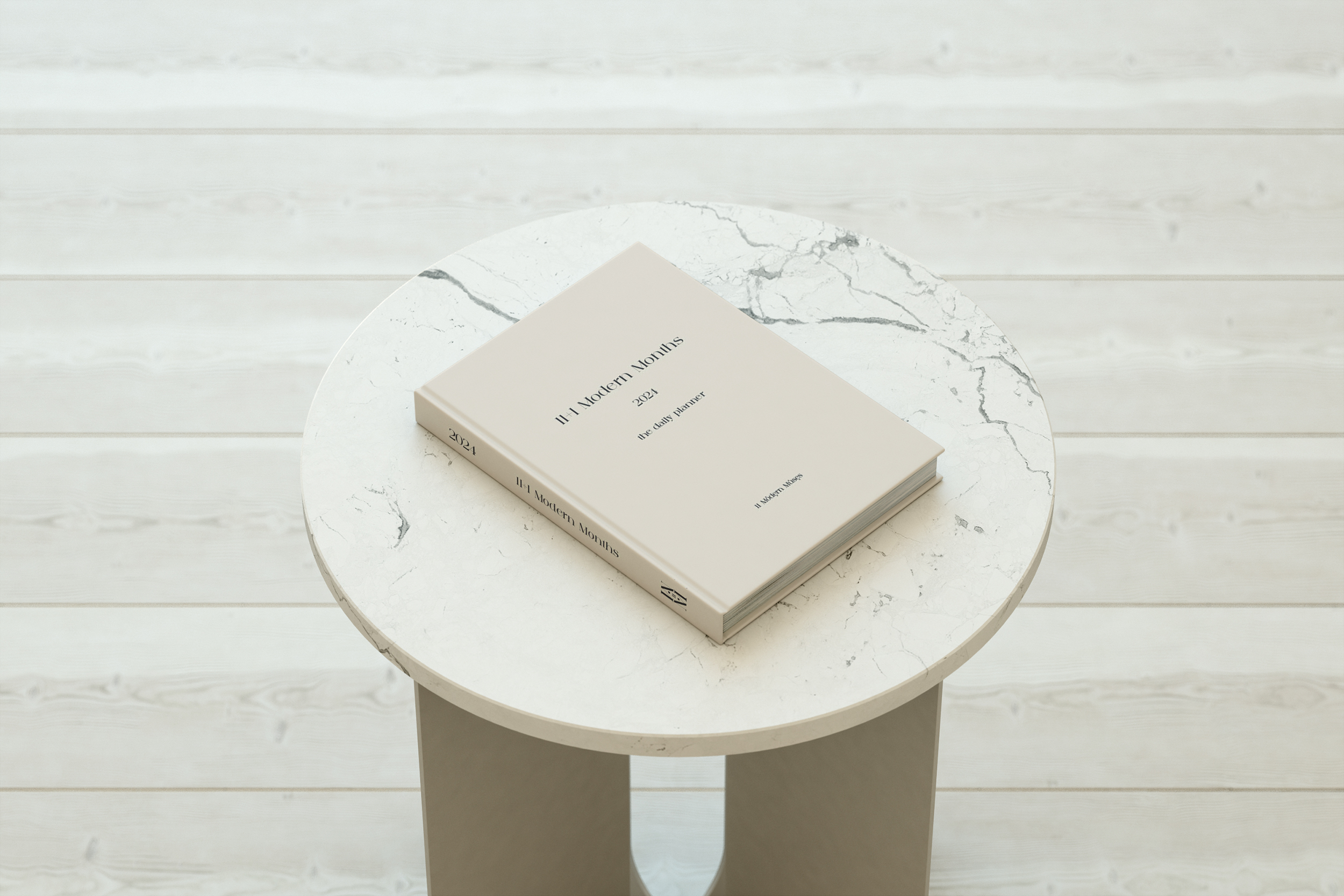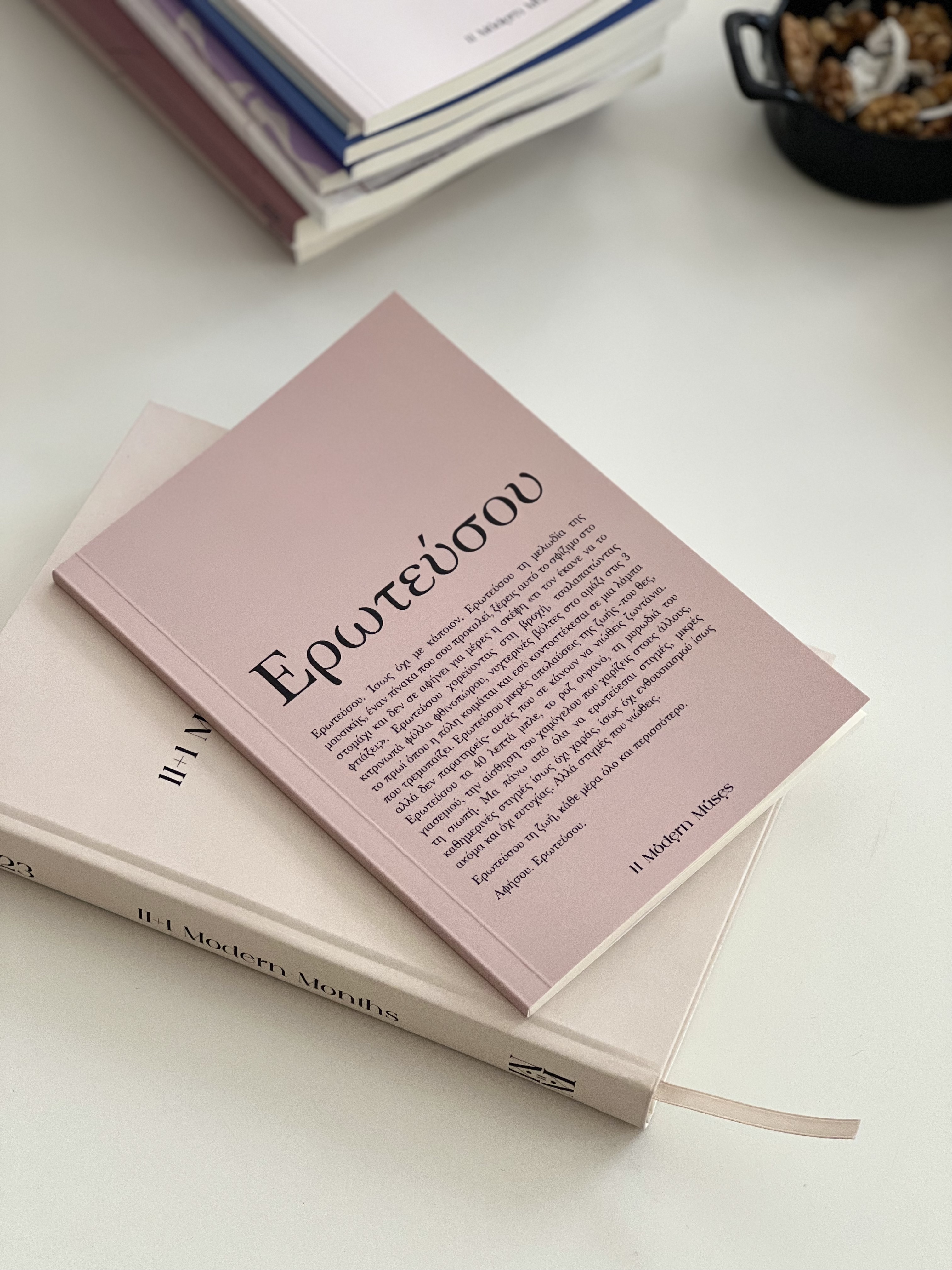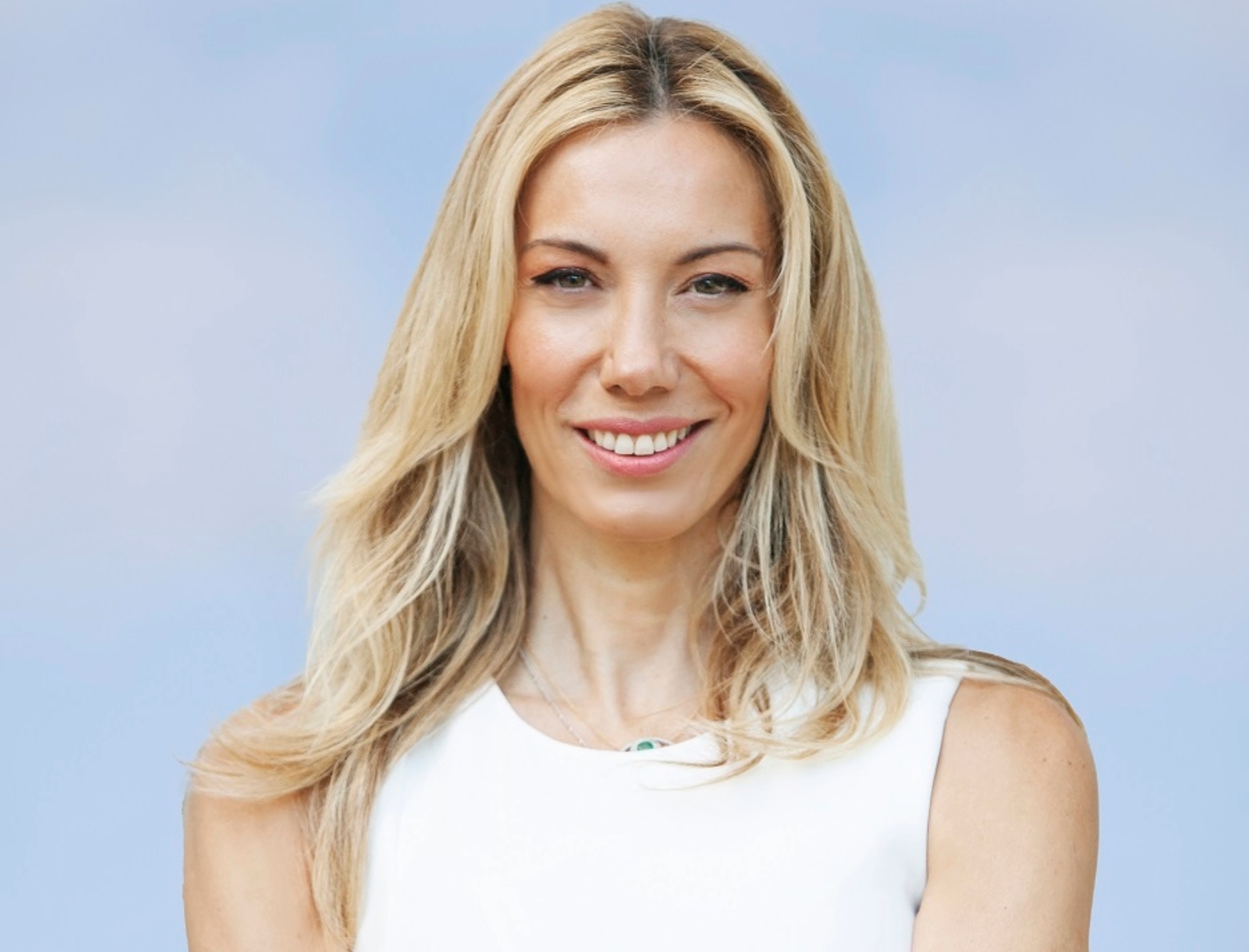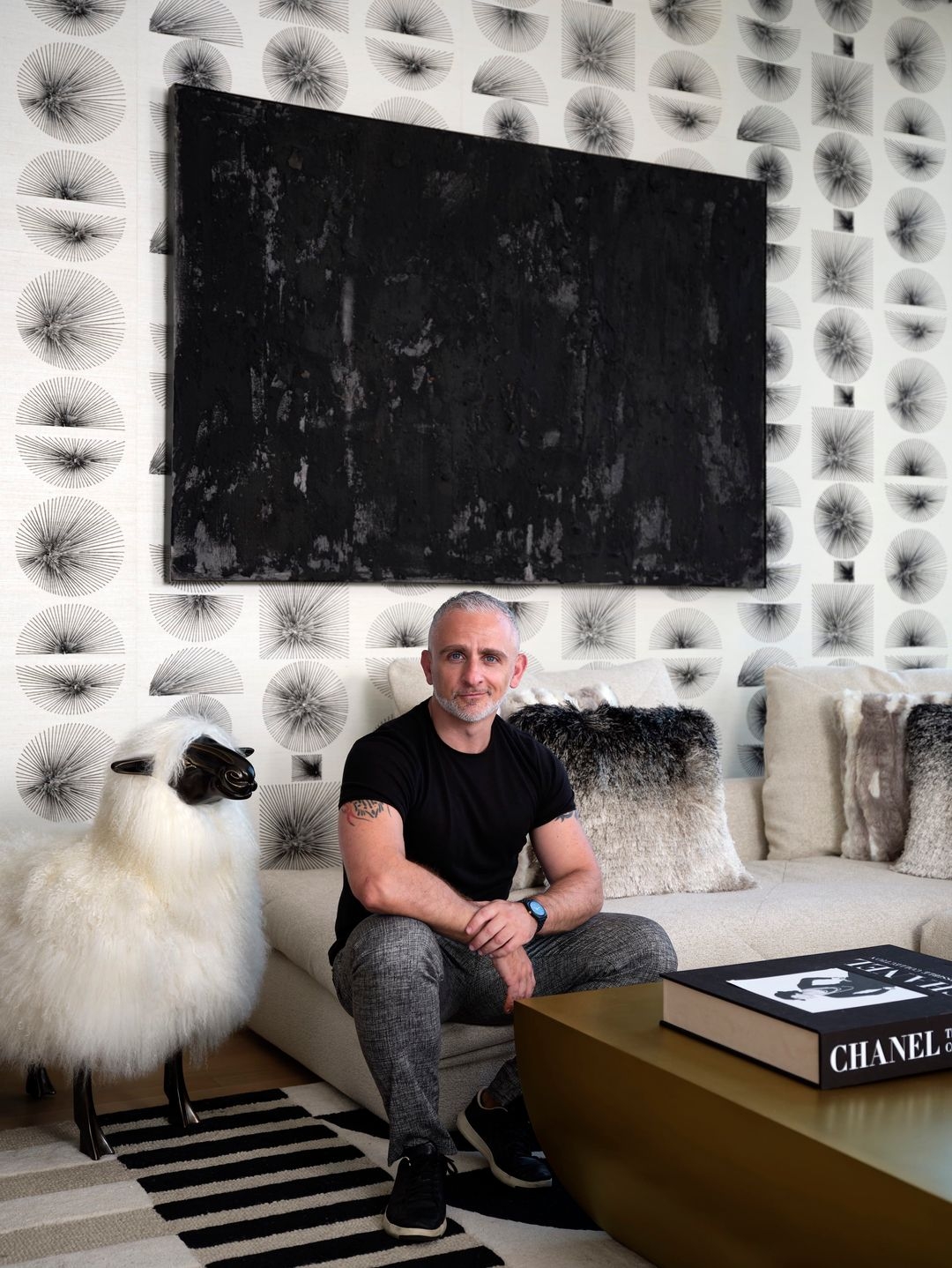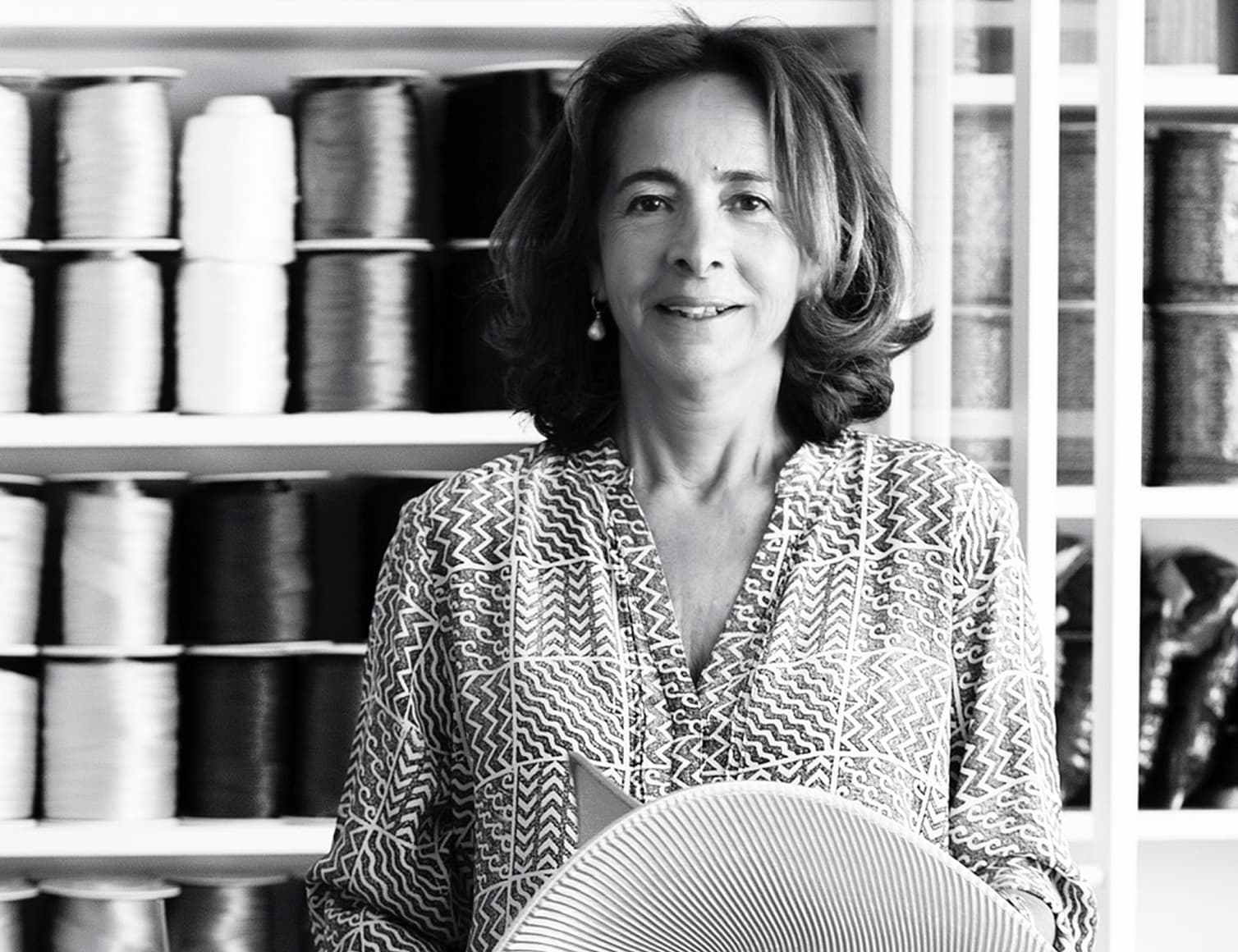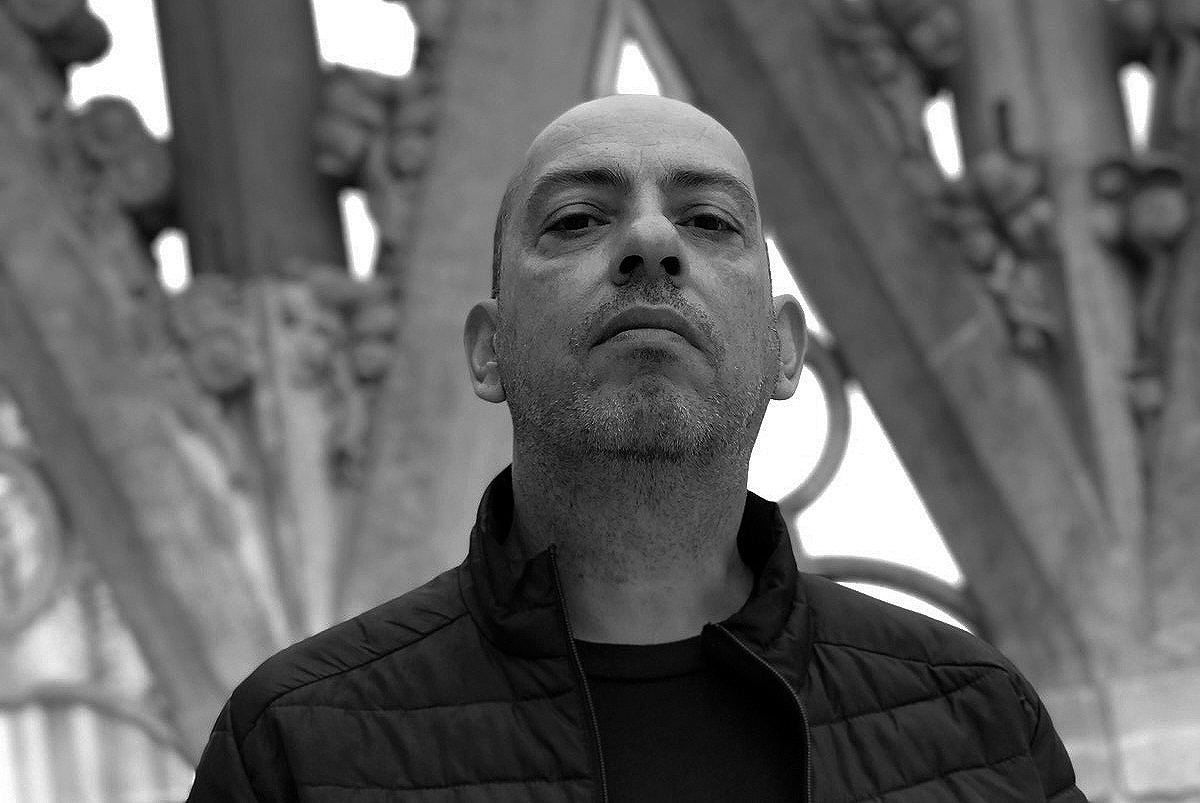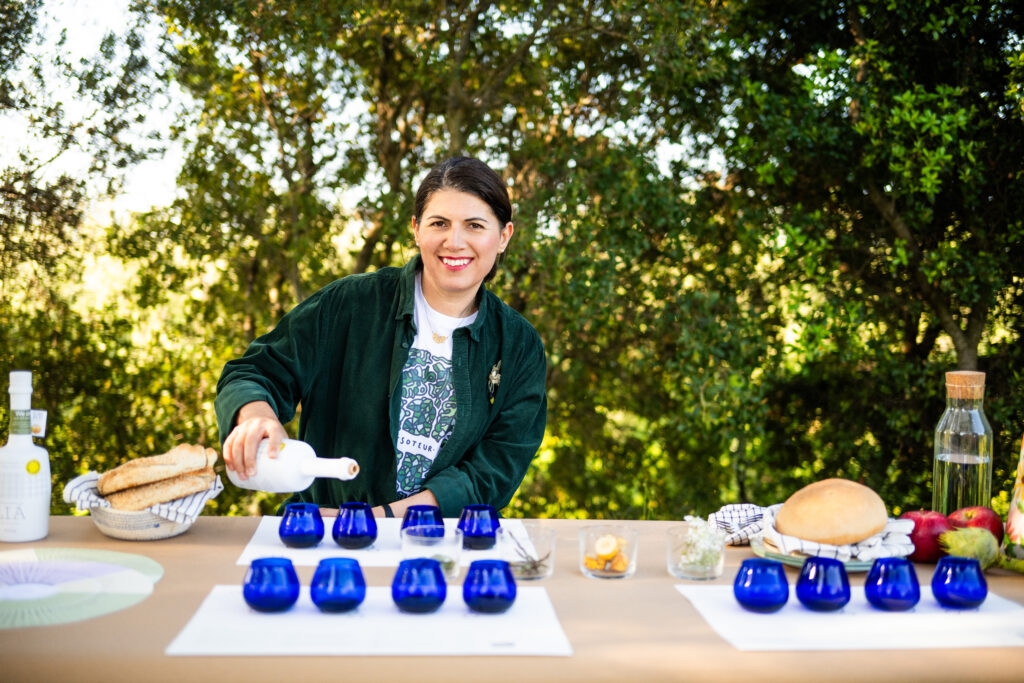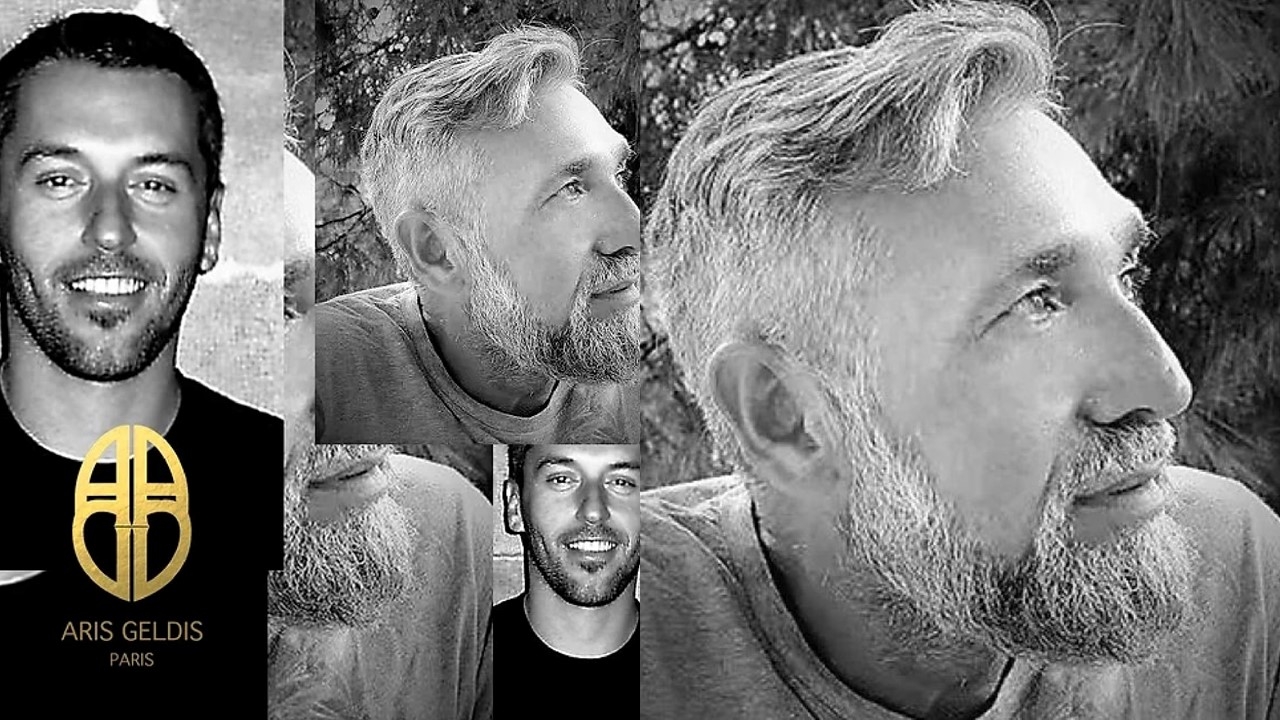How would you describe your work? Tell us more about the ''11 Modern Muses'' project.
From my studies in Architecture, I realized that I wanted to create places and not just spaces for people. Τravelwords between cracks, unanswered questions, sequences of lust and fruits of logic have constituted the keystones for 11 Modern Muses.
An ever-evolving place of art and architecture creating soulful design objects and shaping experiences that inspire the senses and encourage mindful living.
The 11 Modern Muses' eclectic collections of Wall Art (artprints, poemprints and textprints), Home Fragrances and Stationery are meant to make us rethink the way we view our daily lives, the aesthetics of our home, and the alignment of our parts: body, soul and mind.
How essential is our well being in this demanding digital era?
In the fast-paced and interconnected world of the digital age, it can be challenging to maintain a healthy balance between our digital live, our physical presence and overall well-being.
Prioritizing our well-being --and not only our self-care routines-- is essential to navigate these complexities, maintain a healthy balance between our digital interactions and real-life experiences, and ensure our physical, mental, and emotional health.
Neglecting our well-being in this digital era can lead to burnout, decreased quality of life, and various health issues. Therefore, taking deliberate steps to nurture our well-being and cultivate the self is not only beneficial but also necessary for thriving in today's technology-driven world.
What are the benefits of using journal prompts?
Writing by hand on physical paper helps us think, focus, explore, revive and create. In this direction, the 11 Modern Muses poetic notebooks, self-cultivation workbook, and 11+1 Modern Months planners have been created as tools for introspection, reflection, and personal development.
Exploring the art of writing rather than just typing on a computer provides clarity and perspective (Focus), helps us to organize our daily tasks (Tracking Progress), understand ourselves (Self-awareness), explore our thoughts and emotions (Memory Preservation), foster personal growth, release our desires and needs that are tucked away in some corner of the mind (Mindfulness and Mind-Soul-Body Connection).
Moreover, scientific studies have shown that writing by hand on physical paper works as a therapeutic outlet, allowing us to release emotions and relieve our daily stress (Stress Relief, Catharsis and Healing).
According to my experience, adopting a regular prompt-based journaling ritual under the light of a candle has provided me with a safe place to record momentary unconscious thoughts, build self-awareness, structure my life in a balanced way, track my progress, solve problems and come back to it when I need to.
This is why I am calling all word keepers out there to establish a dedicated writing routine – a path to overcome procrastination, embrace productivity, and unleash full creative potential.
Where do you find inspiration?
Thoughts that start popping up effortlessly, unconsciously, immediately in my head. Words that become phrases, that become verses. Each poem has its own narrative pulse. Pulses like alloys ready to hatch.
Hellenicity, these small important moments of everyday life, the handholding of an elderly couple passing by my studio, eros and human existence are elements of inspiration that are reflected in every creation of 11 Modern Muses.
Can you tell us more about your design background?
The intersection of architecture, sustainable energy planning, and art has always captivated me. That’s why I decided to educate myself on various fields.
My multidisciplinary educational background consists of a blend from Architectural thinking (MA), Sustainability and Engineering (MSc), Participatory design approaches, Cultural Management (MSc) and Social Marketing (MA).
All this experiential knowledge constitutes the core of my purpose-led project (#UrbanCommons) and my passion-led project (#11ModernMuses).
Why did you become a designer?
I know that in a CV I should “declare” what I am, what work I do. However, in order to better express myself, what I am becoming or doing, I would say that: I live my life through architecting, poeting, and designing. Yes, Verbs and not Task fields.
But let me take you on a journey of how I became who I am now. I guess it all started in my childhood. As a child of a philologist and a mathematician, I was exposed to the world through art, numbers and words.
From a young age, I started getting to know theatrical plays, museums, artists and scientists.
As I grew up, I started to express thoughts through poetry, but for some reason I stopped. I'm still trying to remember what happened. It had something to do with a review I received.
Around 2015 I wanted to express myself through unconscious momentary poetic writing and combine it by creating narrative collages of photographs, drawings and shapes.
But then something else happens. I had to become an Architect. I had to find a job in an Architectural office. And I stopped again. After years of finding myself, I accepted that I am not only an Architect, I am not only an Artist, I am not only a Poet, but an amalgamation of all the above.
And then began an ever-evolving journey of understanding that all the art forms I use as means of creative expression beyond traditional design allow me to communicate ideas and feelings in unique ways.
What are your strengths?
Often, we hold a preconceived notion that artists and poets inhabit cluttered ateliers strewn with artworks and scattered papers, while architects epitomize meticulous organization, with every item in its designated place.
But what transpires when these seemingly disparate worlds converge?
My strengths stem from the harmonious convergence of my passions and skills, resulting in a unique mix that defines my identity.
This interplay embodies my strengths—a delicate dance between contrasting realms. I seamlessly navigate these diverse territories, harnessing the imaginative spirit of artists and poets while maintaining the structured approach of architects.
It's a harmonious blend, an orchestration of artistic expression guided by architectural sensibilities.
This fusion empowers me to conceive and create in a way that is at the same time boundless and purposeful, transcending conventional boundaries and yielding a truly unique and impactful outcome.
Furthermore, my resolute commitment to embracing the intricacies of life infuses every interaction with genuine and contagious enthusiasm.
This, in turn, nurtures an environment where positivity thrives, offering enriching experiences to all those I engage with.
What are the most important tasks on your to-do list?
My most important task revolve around 3 main intentions:
- Creating Meaningful Projects
- Ensuring Body, Mind and Soul Balance
- Creating Win-Win Interactions
What criteria do you use to decide which tasks to tackle first?
I prioritize tasks based on a combination of their importance, urgency, and potential impact. This is the philosophy behind 11+1 Modern Months daily planner spread also. Here's how I generally approach task prioritization:
- Important & Urgent: Tasks that are both important and time-sensitive take precedence.
- Important & Not Urgent: Tasks hold significant long-term value but might not have an immediate deadline.
- Urgent & Not Important: Tasks that demand immediate action but they can be delegated or streamlined.
- Not Important & Not Urgent: Tasks that are evaluated to determine if they can be minimized, delegated, or even eliminated to free up time for more impactful endeavors.
By evaluating tasks through these criteria, I aim to optimize my efforts, focus on tasks that align with broader goals, and ensure a balanced and effective approach to task management.
How do you handle competing demands and priorities?
Handling competing demands and priorities involves a systematic approach to ensure effective task management.
Initially, I assess factors like deadlines and importance, then prioritize tasks based on urgency and alignment with intentions and goals. This helps me identify which tasks should take precedence.
Secondly, I allocate dedicated time blocks for different tasks based on their priority level, that helps ensure that each task receives appropriate attention.
An important part for me is to break down complex tasks into smaller, manageable steps.
This approach allows me to make progress on multiple tasks even when time is limited. A needed mindset here is to be flexible.
If new information or priorities emerge, I adjust my plan accordingly while keeping the overall goals in mind.
Finally, regular reviewing and re-evaluating priorities help ensure that I am staying on track and making good decisions.
By applying these strategies, I aim to navigate competing demands and priorities effectively, optimizing my efforts to achieve the best possible outcomes in various situations.
Your future plans?
In the realm of 11 Modern Muses, my forthcoming plans involve an extended stationery collection encompassing daily and weekly planners. This collection is scheduled for launch in mid-September 2024.
My journey to create these planners was born from a personal quest to overcome procrastination and nurture self-care amidst life's complexities.
I embarked on creating an all-in-one fusion of a planner and a journal, aligning with my mission to foster personal growth.
Pouring heart and soul into every page, layout and every little detail of the next 11+1 Modern Months planners, I envisioned a tool to conquer procrastination and nurture intentional living, keeping you, dear Muse, at the heart of it all.
These planners encapsulate the essence of 11 Modern Muses: Inspiration, Self-Exploration, Emotional Envisions, Soulful Design, Mindfulness, Lyric Guidance, and more.
Beyond this, my creative journey continues with the exploration of diverse art forms, including my debut poetry collection, and the creation of design objects to inspire fellow art and poetry enthusiasts.

